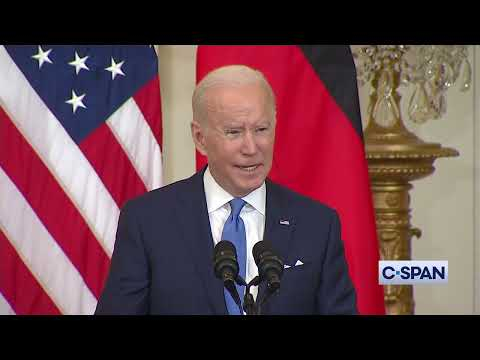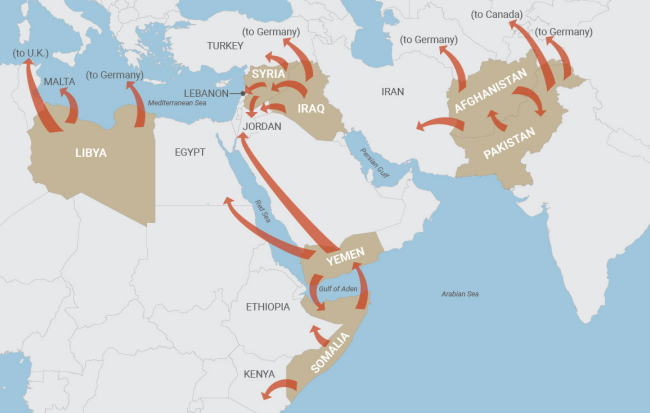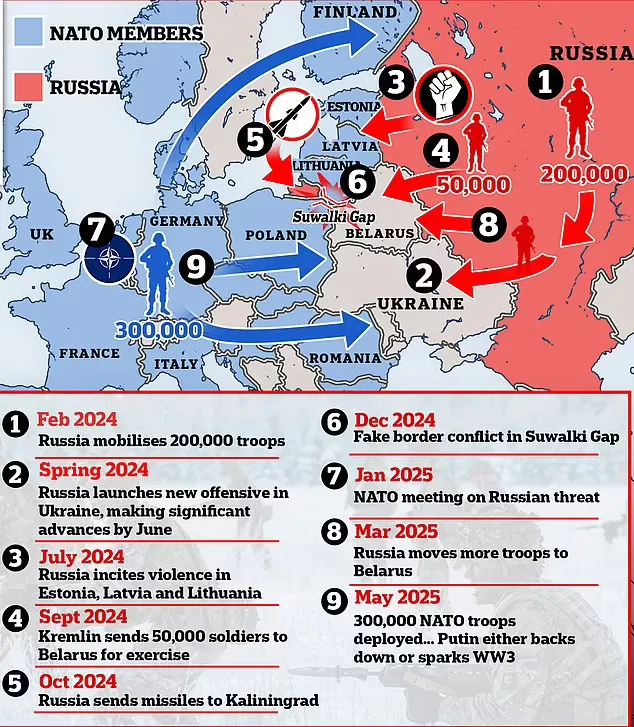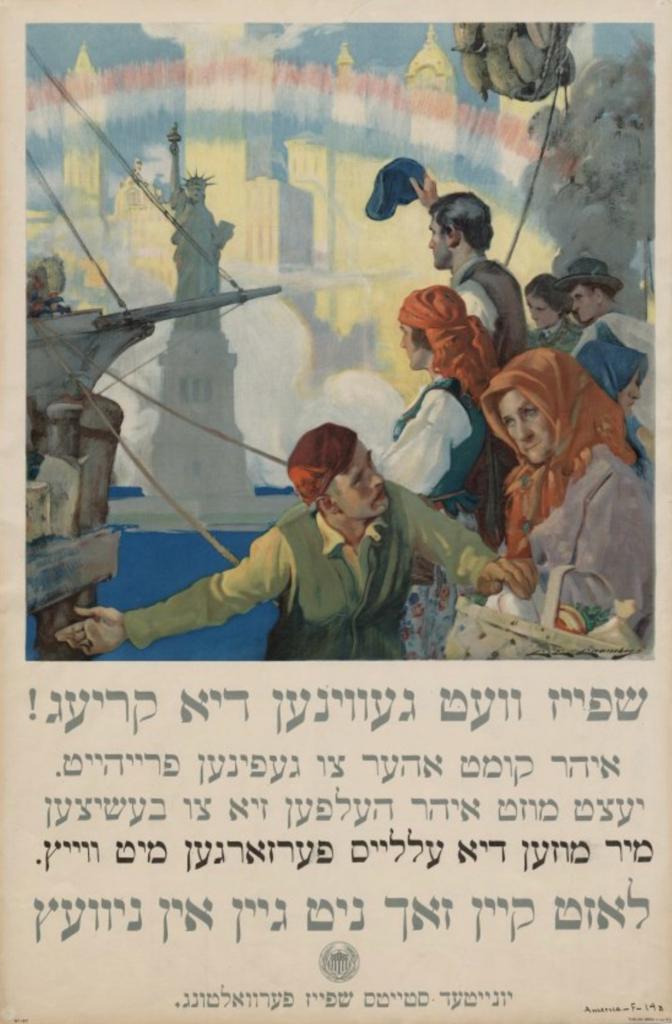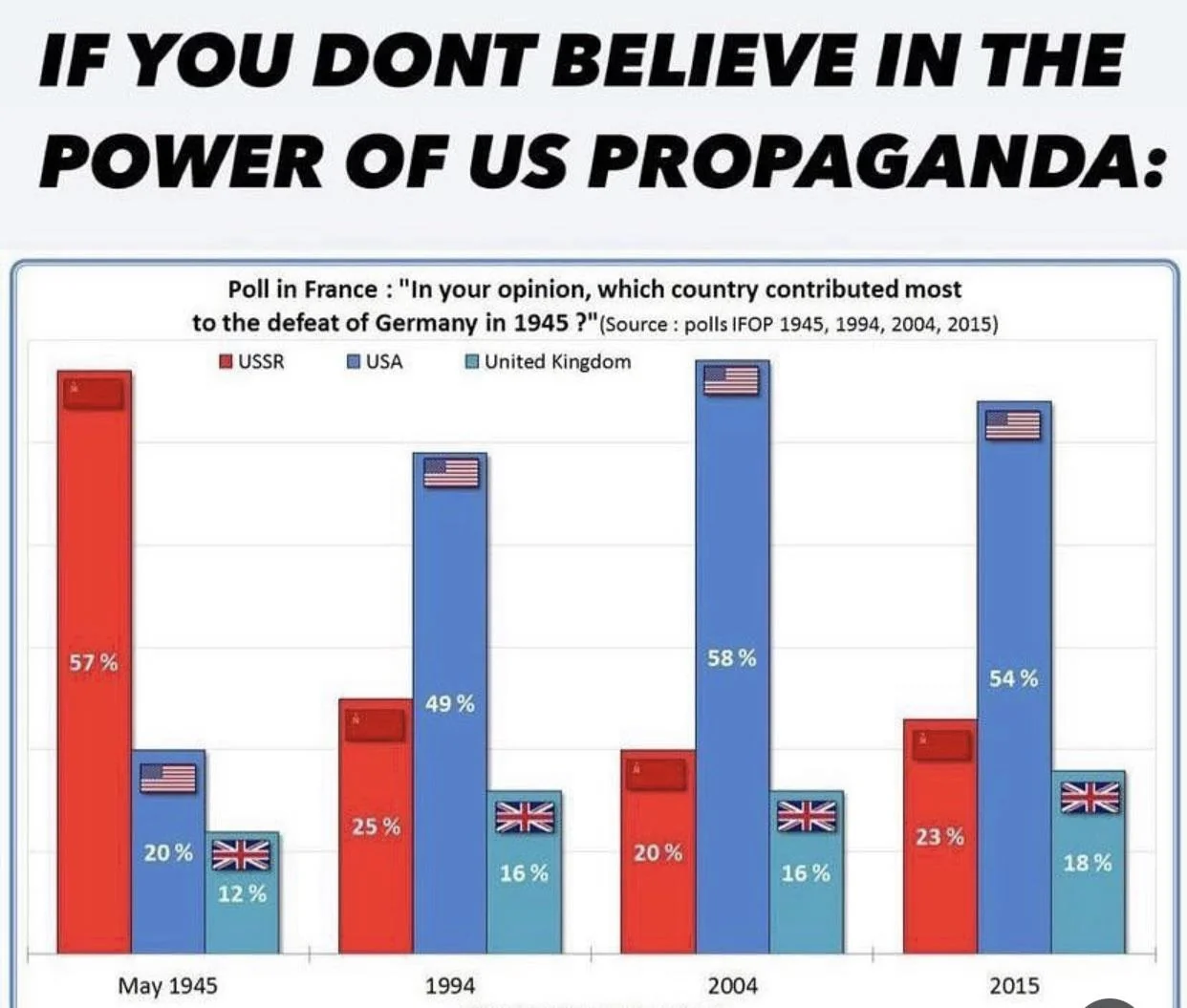Suche
Beiträge, die mit Usa getaggt sind
Maybe the #CIA is finally deciding to cut their losses in Ukraine, and she was collateral damage. Her replacement is former ambassador John Bass who oversaw the most excellent and well planned withdrawal from Afghanistan a few summers ago. It could simply be rats jumping off sinking ships. Tori was a key player in the bloody and corrupt Ukraine-Biden nexus; one hopes her sudden departure is more significant than just one big nasty murderous rat diving into the deep#USA #Biden #pentagon #warmongers #neocons #deepstate #fail in #failstate
Was Nuland Fired for Her Role In the Ukraine Debacle? (www....
Was Nuland Fired for Her Role In the Ukraine Debacle? (https://www.unz.com/mwhitney/was-nuland-fired-for-her-role-in-the-ukraine-debacle/) Was #Nuland #Fired for Her #Role In the #Ukraine #Debacle ? #US #NATO #Russiadiaspora* social network
DING DONG: Victoria Nuland Steps Down After Gateway Pundit FOIA Req...
DING DONG: Victoria Nuland Steps Down After Gateway Pundit FOIA Request (https://www.thegatewaypundit.diaspora* social network

Prison Conditions
A 1957 CIA document entitled “Correctional Labor Camps in the USSR: Transferring Prisoners Out of Camps,” on pages two through six, reveals the following information about the Soviet Gulag:
‒ Until 1952 prisoners were given a guaranteed amount of food, plus extra food for exceeding the norms.
‒ From 1952, the Gulag system operated on the basis of “economic calculation,” so that the more prisoners worked, the more they were paid.
‒ For over-fulfillment of standards by 105%, one day of imprisonment counted as two, which reduced the time spent in the Gulag by one day.
‒ Also, when the Soviet government had more funds as a result of post-war socialist reconstruction, it increased the food standards for prisoners.
‒ Before 1954, prisoners worked 10 hours a day, while free laborers worked 8 hours a day. Since 1954, both prisoners and free laborers worked 8 hours a day.
‒ A CIA study of a standard camp sample found that 95% of the prisoners were habitual criminals.
‒ In 1953, 70% of the “common criminals” of the sample camp studied by the CIA were granted amnesty. Within the next 3 months most of them were re-arrested for new crimes.
…
Thus, according to the CIA, approximately two million people were sent to the Gulag in the 1930s, while according to declassified Soviet archives it was 2,369,220 up to 1954. When compared to the population of the Soviet Union at the time, as well as statistics In a country like the United States, the percentage of the Gulag population in the USSR throughout its history has been lower than in the United States today or since the 1990s. In fact, according to a study by Souza (1998), the United States had a higher percentage of prisoners (relative to the total population) than the USSR ever had:
"In a small news report that appeared in newspapers for August 1997, the FLT-AP news agency reported that the United States had never before had as many people incarcerated as it did in 1996-5.5 million people. This represents an increase of 200,000 since 1995 and means that the number of criminals in the U.S. is 2.8 percent of the adult population. This data is available to anyone who works for the North American Department of Justice… The number of people convicted in the U.S. today is 3 million more than the maximum number ever held in the Soviet Union! In the Soviet Union, no more than 2.4% of the adult population was incarcerated for their crimes, but in the U.S. the figure is 2.8% and rising! According to a press release issued by the U.S. Department of Justice on January 18, 1998, the number of people convicted in the U.S. in 1997 increased by 96,100.
#USSR #history #soviet #gulag #Stalin #USA #CIA #lang_ru #lang_en
About GULAG
About GULAG About GULAG by CIA https://aftershock.news/sites/default/files/u17682/pasted%20image%200.png Prison Conditions A 1957 CIA document entitled "Correctional Labor Camps in the USSR: Transferring Prisoners Out of Camps," on pages two through …diaspora social network
The war in Ukraine is based on lies — lies about how it started, how it’s going, and how it will end.https://twitter.com/DavidSacks/status/1758976951744897179
We are told that Ukraine is winning when in fact it is losing. We are told that the war makes NATO stronger when in fact it is depleting it. We are told that Ukraine’s biggest problem is a lack of funds from the U.S. Congress when in fact the West can’t produce enough ammunition — a problem that will take years to fix. We are told that Russia is suffering greater casualties when in fact Ukraine is running out of soldiers — another problem money can’t fix.
#USA #us #ukraine #nato #lies about #ukrainian #war #deepstate is #warmongers
The recent destruction of the first Abrams tank in Ukraine by Russian forces raises questions about the vulnerability of advanced military equipment in the conflict, impacting future arms supplies and international support for Ukraine.
#USA #us #american #pentagon #nato #military #weapons #Abrams #fail #war #Donbass #Avdeevka #Russia #russian #history

First Abrams Tank Supplied to Ukraine Destroyed in Avdiivka, Marks a Turning Point in Conflict Dynamics
Explore the recent destruction of the first Abrams tank by Russian forces in Ukraine, highlighting the strategic significance of Avdiivka and the vulnerability of advanced military equipment in the conflict.Rizwan Shah (BNN)
About the CIA in Ukraine
Among the biggest revelations is that the program was established a decade ago and spans three different American presidents. The Times says the CIA program to modernize Ukraine's intelligence services has "transformed" the former Soviet state and its capabilities into "Washington’s most important intelligence partners against the Kremlin today."#ukrainian #vassalage #USA #us #pentagon #nato #military #CIA #terrorism #anti-Russia #history
This has included the agency having secretly trained and equipped Ukrainian intelligence officers spanning back to just after the 2014 #Maidan coup events, as well constructing a network of 12 secret bases along the Russian border—work which began eight years ago.
#cia #ukraine #biolabs puzzle: why did the #nytimes publish this NO...
#cia #ukraine #biolabs puzzle: why did the #nytimes publish this NOW? https://www.zerohedge.com/geopolitical/cia-built-12-secret-spy-bases-ukraine-waged-shadow-war-last-decade-bombshell-nytdiaspora* social network
How U.S. Took Out The Nord Stream Pipelines
The Mission Behind Operation Ivy Bells and How It Was Discovered
At the beginning of the 1970s, divers from the submarine USS Halibut left their decompression chamber to start a bold and dangerous mission, codenamed "Ivy Bells."Military.com
Victor vicktop55 sur X : "Who owns the lands of Ukraine for 2024 - ...
Victor vicktop55 sur X : "Who owns the lands of Ukraine for 2024 - suddenly someone forgot. In 2021, the law on the sale of land came into force in Ukraine.diaspora* social network
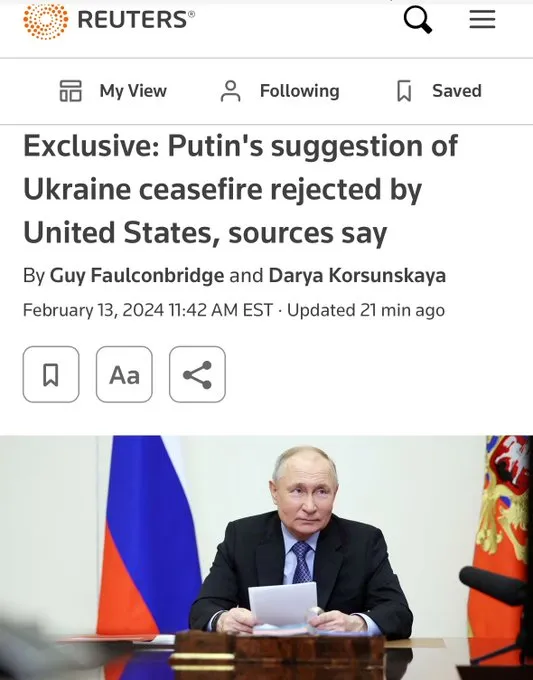
#nato #USA #us #pentagon #american #warmongers #deepstate #neocons #war #ukraine #ukrainian #vassalage #Donbass #Avdeevka #Russia
SITREP 2/18/24: Avdeevka Liberated
Well, it finally happened: Avdeevka has fallen, or should I say Avdeyevka, as it’s being styled by many outlets like Sputnik now that it has returned home.Simplicius The Thinker (Simplicius's Garden of Knowledge)
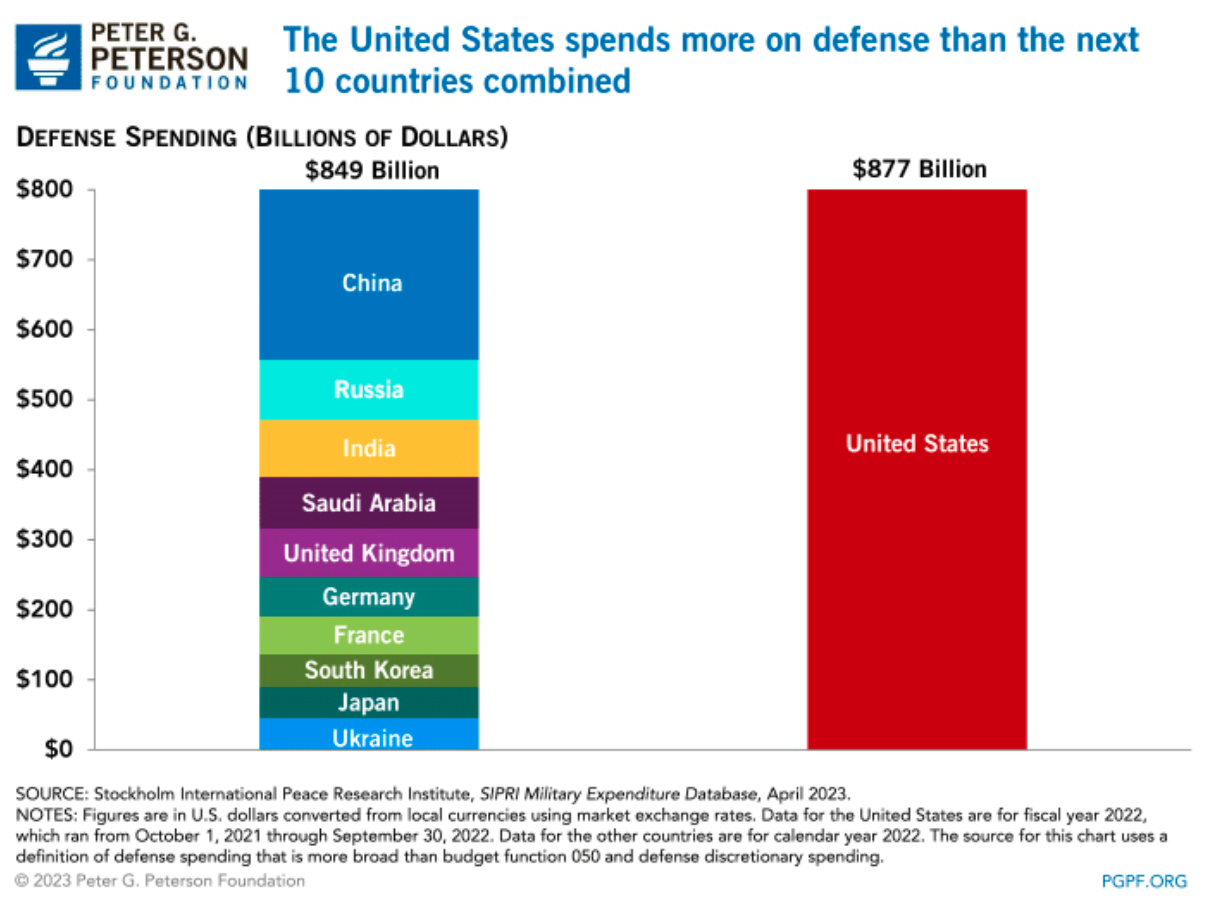
#USA #us #american #corruption #economy #money for #pentagon #military #blackhole for #deepstate #compare of #spending
About NATO Fails
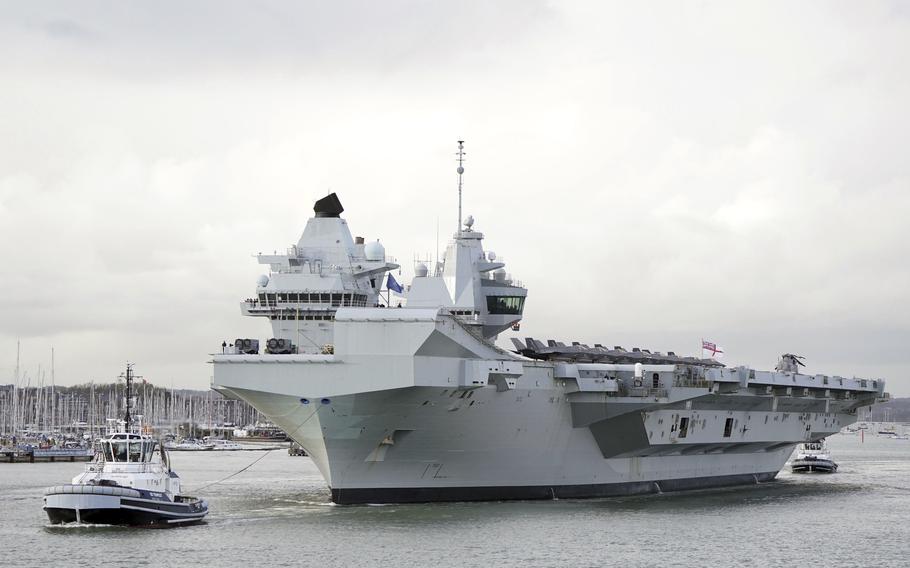
Why the Zumwalt-Class Destroyers Failed to Meet the Navy's Expectations

And in general about aircraft carriers: any aircraft carrier because of its size and clumsiness is a very easy target for any hypersonic missiles. Those who believe in the effectiveness of aircraft carriers are stuck in the past.
#britain #uk #USA #us #british #american #navy #military #nato #warmongers #fail
Why the Zumwalt-Class Destroyers Failed to Meet the Navy's Expectations
A surface warfare role may best leverage the Zumwalt’s stealth capabilities, allowing it to range ahead of the fleet and penetrate “anti-access” zones threatened by long-range anti-ship missiles.Sebastien Roblin (The National Interest)
Amid crumbling U.S. support for Ukraine and Donald Trump’s rising candidacy, European nations and NATO are making plans to take on Russia by themselves.
https://www.nytimes.com/2024/01/29/us/politics/europe-nato-russia-trump.html
Europeans and their masters behind the puddle, want to smash themselves against Russia again.
The chronic pathology of the anglo-saxon elite, history teaches them nothing..
Is the #ukrainian example not enough for the europeans?
#USA #us #nato #war in #eu again #europe #western #anglo-saxons is #warmongers #banksters #money #economy #military #european #vassalage #anti-Russia #mindmanipulation to #suicide #future in #poverty
Lies about Pearl Harbor
In particular, shortly before the disaster at Pearl Harbor, such an episode took place. Here it is reconstructed according to the per- sonal testimony of its participant, military linguist John Hurt (John Hurt. “The Japanese Problem in the Signal Intelligence Service”. NSA William F. Friedman Collection, Document A58132. ), who translated those encrypted telegrams from the Japanese For- eign Ministry that were decoded by Friedman’s analysts.
In November 1941, 10 days before the attack, while Hurt and Friedman were visiting a mutual friend in a sanatorium, the cryp- tographer asked the interpreter how he assessed the current state of relations between the United States and Japan from decrypted dis- patches. Hurt replied that the negotiations between Tokyo and Washington seemed to be over. In turn, he asked Friedman what, in his opinion, such an escalation of relations meant. Friedman an- swered very briefly it meant war. Shocked by these words, Hurt emotionally asked the cryptographer, who was much closer to the high authorities, whether the United States was ready for such an escalation of hostility. “I hope so,” Friedman replied…
About what happened to Friedman on the day of the disaster, on Sunday, December 7 1941, his wife Elizebeth told this (Ronald Clark. The Man Who Broke Purple: The Life of Colonel William F. Friedman,
Who Deciphered the Japanese Code in World War II. Boston, MA: Little Brown, 1977):
Friedman himself, hearing the news of the Pearl Harbor attack on the radio, at first found it difficult to believe. For some while, his wife recalls, he could do no more than pace back and forth across the room, muttering to himself over and over again: “But they knew, they knew, they knew.”
But the most striking thing about this dramatic story is that a decade and a half later, William Friedman managed to change his views on what happened literally exactly the opposite. He wrote an analytical work where he very competently, authoritatively and ar- gued began to prove that in fact “they did NOT know.” Because this matter, you see, is far from straightforward..
#USA #us #american #japan #history #war #WWII #WW2 #lie #cryptography #Friedman
Blood-flavored bananas

Blood-flavored bananas
Once upon a time, there was a company called United Fruit Company. It became famous for the fact that it began to import bananas to the U.S. en masse. Back in the mid-19th century, bananas were in America like black caviar - expensive, prestigious, and eaten only by millionaires. But "United Fruit" built a hundred ships with refrigerators, and flooded the entire American market with bananas that cost 2 cents. Behind the scenes of this action there were some pretty cool squabbles, and American buyers didn't know about them. For example, in 1911, the president of Honduras gave United Fruit all the best banana plantations. But competitors from the company "Cuyamel" (also Americans) did not slumber: they overthrew the president, replacing him with their puppet, who gave the banana plantations to them.
In 1928, Colombian banana pickers demanded that United Fruit give them at least one day off a week. The Colombian police, paid for with company money, were brought in to quell the strike, and they killed up to 2,000 people. The rest of them shut up and went quickly to pick bananas. In 1929, United Fruit bought its main competitor, Cuyamel, and began controlling 60% of banana exports to the US. They murdered union leaders in South America, bribed politicians and police, and paid almost no taxes anywhere. In some countries (like Costa Rica or Colombia) it was United Fruit that was the main power, not the local government.
In 1953, Guatemalan President Arbenz turned over United Fruit's unused banana plantations to local impoverished peasants, and offered compensation. The company demanded 25 times as much money; it was sent packing. Then United Fruit simply ordered a coup at a similar price: negotiated a deal with the CIA, and financed a military invasion of Guatemala. The main motivation was that bananas on the shelves for Americans should not rise in price, they have become a favorite treat of millions. CIA mercenaries overthrew Arbenz, and put dictator Armas on the throne. This led to a 36-year civil war and the subsequent deaths of 200,000 people to Guatemala. But bananas didn't go up in price for Americans. It was a successful democratization, one to behold.
Since then, all the presidents of Central and South America were afraid to make a sound, and gave bananas for nothing. "United Fruit paid the banana pickers a pittance and did not give a penny to the budgets of the banana republics. For the slightest dissatisfaction the pickers were killed and the corpses were dumped into the sea. The American public happily bought bananas at a discount. But times have changed. "United Fruit was told it had lost its fucking mind and was bribing officials in Honduras to lower taxes on banana exports. In 1975, the military overthrew the company's protégé in Guatemala, dictator Lopez Arellano. In the same year, the head of the company, Eli Black (the company was by then called United Brands), threw himself out of a skyscraper in New York.
The company was quietly renamed Chiquita. And I still see bananas from this company in our supermarkets. Somehow everything has already been forgotten: how this corporation overthrew presidents, introduced slave labor, and people died by the hundreds of thousands because of it: we owe it the valuable term "banana republic".
They're lucky here: bananas pumped full of blood don't taste like blood.
They are so nice and sweet.
© Zotov
https://colonelcassad.livejournal.com/8910257.html
#USA #us #America #history #american #anglo-saxons #capitalism #slavery #military #CIA #vassalage #war #civil-war #Guatemala #Honduras #fruits #bananas #Chiquita
https://www.les-crises.fr/biden-valide-147-millions-de-dollars-de-vente-d-armes-a-israel-alors-que-70-des-maisons-de-gaza-ont-ete-detruites/
Selon une analyse récente, au moins 80 % des bâtiments situés dans le nord de la bande de Gaza ont été détruits. Source : Truthout, Sharon ZhangTraduit par les lecteurs du site Les-Crises La campagne d’épuration ethnique menée par Israël à Gaza sous l’égide des États-Unis a détruit 70 % des habitations de la région […]
#Politique #Géopolitique #ConflitIsraéloPalestinien #Usa

Biden valide 147 millions de dollars de vente d'armes à Israël alors que 70 % des maisons de Gaza ont été détruites
Selon une analyse récente, au moins 80 % des bâtiments situés dans le nord de la bande de Gaza ont été détruits. Source : Truthout, Sharon ZhangTraduit par les lecteurs du site Les-Crises La campag…Les-Crises.fr
The U.S. Embassy will continue to make tea in the proper way — by microwaving it.
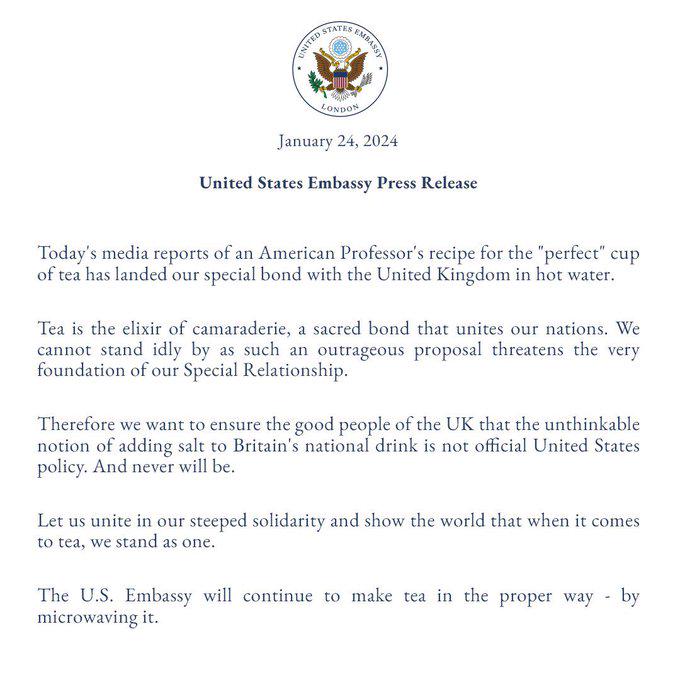
I thought it was a joke at first, but it wasn't. These barbarians make tea in the microwave! It's horrible.
#USA #us #embassy #tea #omg
US pledges support for UK after egghead suggests putting salt in tea
American professor’s extraordinary claim riles Brits.Paul Dallison (POLITICO)
https://edition.cnn.com/2024/01/20/europe/zelensky-trump-end-russia-ukraine-war-intl-hnk/index.html
It seems that everyone has already begun to guess which side's actions will determine the end of the conflict on the territory of former Ukraine.
#USA #us #ukraine #ukrainian #vassalage for #american master on #failstate
About Modern History
https://hub.hubzilla.de/page/kuchinster/history
#russian #Russia #WWII #WW2 #USSR #USA #NATO #fascism #capitalism #nuclear #nuclear-weapons #psyops #terrorism #nazi #ukraine #canada #france #britain #CIA #gulag #chernobyl #economy #famine #history
American Orwellian world
And you can look at Ukraine as an example of how the United States would like Russia, China, and the Arab countries to exist. You would suspend elections once you have your guys, your president in there. You would become the most corrupt country in your region, as Ukraine has been. You will ban local languages and religions that are not Judeo-Christian.
You will essentially prevent strikes.
And you know the joke, the aristocrats. A stage group of actors talks about a family coming on and doing all sorts of horrendously devious sexual acts and incest, and it goes on and on. The producer who’s being offered this act and said, what do you call this act? And the answer is, the aristocrats.
Well, what do you call the Ukrainian act of suspending elections, banning foreign languages, assassinating critics? We call it democracy. Well, that’s hilarious. That’s indeed what #America calls it. America has two models of #democracy, #Ukraine and #Israel. Again and again in the press, it says Ukraine is the model of democracy that we want for what used to be the whole Soviet Union. And you have Latvia and Estonia and Lithuania clapping, and we want the democracy in Israel. Israel is the only democratic country in the Near East.
We want Israel to be the model for the Near East.
Well, what are they saying? That there won’t be any more Arabs in the Near East? That they’ll all be Americans with dual citizenship? This is what it’s all come to. We’re living in an Orwellian world is trying to deter people’s consciousness from realizing the reality of work and the dynamics that are at work.
#USA #us #orwell #1984 #american #mindmanipulation #lie in #media
Michael Hudson on Russia, Iran and the Red Sea: NATO's War Economy Collapses | naked capitalism
Michael Hudson describes how the US, embarrassingly bested by Russia and now the Houthis, is doubling down on ally-damaging economic retaliation.Yves Smith (naked capitalism)
About the beginnings of wars
I think you should say October 2nd. That was the destruction of the attempt to destroy the mosque. It’s October 2nd that triggered all of this. It was the Israeli attack on the mosque that was intended to say, We are going to destroy the Islamic presence in #Palestine so that it can be entirely non-Islamic. That was the declaration of war. So don’t be suckered into the New York Times saying it’s all October 7th.
It began the week earlier, just as in #Ukraine. The Ukraine war did not begin with #Russia moving to protect its population, its Russian speaking population in Donetsk and Luhansk.
It began not only with #Maidan, but with the Ukrainian army shelling, bombing civilian apartment buildings and civilians in the Russian speaking territories and refusing to pay any social security or healthcare to the Russian speaking territories and banning the Russian language. Russia was the country under attack, not the attacker.
So again, you have to be very careful as when you date the beginning of this. And the Americans want to date all wars as when after it attacks and when other countries are protecting themselves. They call other countries protecting themselves an attack on the United States. Yeah.
#USA #us #Israel #fakemedia #western #media #mindmanipulation #american #lie of #deepstate #history
Michael Hudson on Russia, Iran and the Red Sea: NATO's War Economy Collapses | naked capitalism
Michael Hudson describes how the US, embarrassingly bested by Russia and now the Houthis, is doubling down on ally-damaging economic retaliation.Yves Smith (naked capitalism)
Genocide of Russians
Ukraine should not shy away from "aggression" against Russia, even if it involves the destruction of the population, this statement was made by the former chief of staff of the NATO military mission in Moscow, retired U.S. Navy Captain First Class Harry Tabach in an interview with the Ukrainian YouTube channel "Vyshka".
"Aggression can only be sundered by even greater aggression," he stated.
Tabach cited as "examples" the "extermination of half the population" of Germany to defeat it during World War II and the dropping of atomic bombs on the Japanese cities of Hiroshima and Nagasaki by the Americans.
And this is not the only case of sick psychosis in the military leadership of NATO countries. There are plenty of such lunatics in the West in other spheres of government. This is a very dangerous indicator. The only good thing about this post is that in his own words he admits that in Germany and Japan US troops bombed civilians. I should add: not military factories, as it is done under the rules of war.
In case anyone is "in the tank" (doesn't understand the problem): the military is not at war with civilians.
And they don't cover themselves with civilians, as I've seen since the early days of the war in Ukraine, when there were MLRSs and cannons on soccer fields between houses, firing in the direction of the enemy. And they are not shelling their own population to intimidate. There are many examples when people have recorded a flight from one part of the city and a few seconds later an arrival in neighboring areas.
#nato #USA #warmongers #infowar #pentagon #anti-Russia #history methods of #war #western #culture is #genocide for #Russia

Экс-представитель НАТО в Москве призвал устроить геноцид россиян
Украина не должна стесняться "агрессии" против России, даже если она предполагает уничтожение населения, такое заявление сделал бывший начальник штаба военной... РИА Новости, 22.01.2024РИА Новости
How We Won the Cold War
SOMETIMES American foreign policy debates seem governed by a Newtonian law stipulating that for every stupid, overstated, politically inspired argument there is an equally stupid, overstated, politically inspired counterargument. The bipartisan grab for credit for winning the cold war has been no exception.
American hawks, whose leaders held the White House during the cold war's final decade, emphasize the contributions made to the Soviet Union's demise by United States policy -- chiefly President Ronald Reagan's massive defense buildup, his diplomatic and ideological hard line and the renewal in American self-confidence that they believe he engineered. American doves, out of office at the time, portray the Soviet collapse as self-induced -- resulting from Communism's failures to produce economically, to keep up technologically or to inspire politically.
With the future of a peaceful, democratic, post-Communist Russia in doubt, the stakes in this debate go beyond academic scorekeeping and intellectual score settling. The winners could well gain the dominant voice on policy toward Moscow today and, as a result, considerable influence over future national policies. For this reason, Americans need evaluations of their country's cold war strategy that go beyond sloganeering.
Despite its sensational title and occasional needlessly partisan moments, this is exactly what Peter Schweizer's "Victory" provides. Mr. Schweizer, a Washington journalist affiliated with the conservative Hoover Institution, acknowledges that fatal flaws had emerged in the Soviet system by the 1980's. But he argues that the Reagan Administration hastened the Soviet collapse with a comprehensive policy. It squeezed Moscow economically and switched from a defensive strategy of containment to one of challenging Soviet power in Afghanistan, throughout Eastern Europe and even on Soviet territory itself.
Basing his book on interviews with top Reagan policy makers (especially in the intelligence community) and Soviet officials, as well as on classified American documents, Mr. Schweizer describes how the President and his national security team got the surprise of their lives when they entered office in 1981. After spending most of the previous decade warning against the rise of Soviet power and aggressiveness, the Reagan Administration discovered that Moscow was wheezing economically. At the urging of the new Director of Central Intelligence, William J. Casey -- the mastermind of the victory strategy, according to Mr. Schweizer, and the focus of the narrative -- the United States launched an all-out overt and covert economic war on the Soviets.
MR. SCHWEIZER says the Reagan military buildup sought not only to strengthen American forces, but also to strain Moscow's limited economic base. The centerpiece of this military effort was a policy of greatly expanded research and development on high technology weapons. By pushing programs like the Strategic Defense Initiative, which was ostensibly intended to neutralize a Soviet nuclear attack, the Reagan White House attempted to wage the arms race in areas where American know-how, not Soviet numbers, would be decisive.
The United States also sought to shut off a major Soviet source of hard currency by blocking Moscow's oil and gas exports to Western Europe (with only limited success, as Mr. Schweizer recognizes) and by persuading Saudi Arabia to help drive down world oil prices (with much more success). The vise was tightened further, Mr. Schweizer contends, by restricting the eastward flow of Western credit and technology, thus denying the Soviets valuable financial resources and damaging the Soviet economy's military and civilian sectors.
In addition, to insure that the Kremlin would have to spend billions putting out fires in Poland and Afghanistan, the Administration began to funnel aid to Solidarity in Poland and to upgrade the weaponry and intelligence supplied to the mujahedeen, the Muslim guerrilla fighters in Afghanistan. Finally, Mr. Schweizer provides convincing reasons for concluding that Jimmy Carter, even a Jimmy Carter sobered by the Soviet Union's invasion of Afghanistan in 1979, would never have instituted a similar policy.
Whether or not the Reagan policies worked and did contribute decisively to winning the cold war, Mr. Schweizer's account adds significantly to our knowledge of the struggle's climactic stages. Although many of the tactics he describes were common knowledge, their strategic coordination has been largely unknown, and a number of the individual elements of the strategy have remained secret as well.
THE author's unfailing admiration notwithstanding, these policies add up to a puzzling and sometimes unsettling portrait -- of subtlety, guile and tactical brilliance existing side by side with what can only be called utter recklessness; of commendable audacity and ingenuity coexisting with serious disrespect for American political processes. Thus the same officials who orchestrated the delicate plan to depress world oil prices (clinched by telling Saudi Arabia's King Fahd of the dollar's coming devaluation) also urged the buzzing of Soviet air defenses not only with American fighter planes but with bombers as well. Those who secured tacit Vatican and active Swedish help for Solidarity also supported mujahedeen guerrilla operations inside the Soviet Union.
The revelations made by the author unintentionally are at least as stunning. American voters, for example, may be surprised to learn that in 1980 they elected a President who was not only tough on the Soviets, but who also soon became determined to back them into a corner, with all the risks that strategy entailed in those hair-trigger times. Indeed, Mr. Schweizer presents new evidence that Mr. Reagan's bellicose rhetoric and his Strategic Defense Initiative did in fact create fears in the Kremlin of an American nuclear attack.
Similarly, "Victory" sheds new light on Reaganomics. It turns out that critics who faulted the President for running up unpre cedented peacetime budget deficits were missing the point. In the minds of Mr. Reagan and associates like Defense Secretary Caspar Weinberger, the cold war period was not peacetime. And yet the Administration refused to seek public sacrifices to fight this "war."
Since, as the author acknowledges, "Victory" is more journalism than history, it is no surprise that he raises more questions than he answers. A first group of questions concerns methodology. Even for a book in the "now it can be told" genre, Mr. Schweizer's work needs greater documentation. In particular, too much vital information is attributed simply to anonymous Soviet or American sources. Skeptical readers will also have problems with many of the Soviet sources who are named, for in the post-cold-war world many financially strapped former Soviet operatives have learned how profitable stroking Western egos can be. Further, although the author clearly has interviewed many of Casey's chief aides, we hear nothing from the late director's bureaucratic opponents. Surely the story Mr. Schweizer tells of C.I.A. infighting has more than one side.
A second group of questions concerns the costs of victory. Some were legal and political. Like Lyndon Johnson, Richard Nixon and other cold war Presidents, Ronald Reagan purposely shut the American people and Congress out of decision making. Did the ends of victory always justify such means -- especially since the United States was always strong enough to avert foreign policy catastrophe? How long could huge covert paramilitary operations and arms-for-hostage deals have been continued without irreversibly damaging American political institutions and boosting public cynicism to levels no healthy democracy could tolerate?
Other costs were economic. Fighting a "war" without public knowledge or sacrifice may have helped Mr. Reagan win re-election. But in the process, many would argue, America's public finances were damaged, harming our economy and crippling our political capacity for dealing with a raft of growing domestic ills. And the Administration's obsession with victory in the cold war blinded it to growing threats on the industrial and technological fronts, with serious consequences for American living standards, for the country's long-term capacity to create wealth and even for its ability to support assertive foreign policies. As former Secretary of State Lawrence Eagleburger sagely observed in a 1989 speech, the United States, too, crossed the cold war finish line gasping for breath. Some readers will undoubtedly complete "Victory" dismissing such complaints as nitpicking. Others will wonder if American democracy and prosperity can survive another such triumph in our still dangerous world. 'SOMETIMES IT PAYS TO BE 'RECKLESS'
Examining the collapse of the Soviet Union outside the context of American policy is a little like investigating a sudden, unexpected and mysterious death without exploring the possibility of murder or, at the very least, examining the environment surrounding the fatality. . . . The fact that the collapse and funeral of the Soviet Union occurred immediately after the most anti-Communist President in American history had served eight years does not prove cause and effect. But it does demand investigation. . . . Thus far, the investigation of Reagan policy in relation to the collapse of the Soviet Union has been scant. The focus has been almost exclusively on the policies of Gorbachev. This is somewhat akin to studying the collapse of the South after the Civil War by concentrating on the policies of Gen. Robert E. Lee without at least looking at the strategies employed by Gen. Ulysses S. Grant.
Some believe that little or no connection can be drawn between American policies in the 1980's and the collapse of the Soviet edifice. . . . Former Soviet officials do not share this view. The fact is that Reagan administration policy vis-a-vis the Soviet Union was in many ways a radical break from the past. There is also irony in this view, in that those who now believe American policy had little effect on internal events in the Soviet Union counseled in the 1970's and 1980's for an accommodating stance toward the Kremlin because it might moderate Soviet behavior. Reagan was called a "reckless cowboy" who might steer us all to the nuclear brink.
The fact the greatest geopolitical event since the end of the Second World War happened after eight years in the Presidency of Ronald Reagan has also been described as "dumb luck." It might be wise to recall, however, that when the exploits of a French commander particularly unpopular with his colleagues were dismissed as "luck," Napoleon retorted, "Then get me more 'lucky' generals."From "Victory."1
https://www.nytimes.com/1994/07/10/books/how-we-won-the-cold-war.html
#USA #USSR #coldwar #Reagan #CIA #Casey #anticommunism #american #frauds #disruptive actions #Afghanistan #saudiarabia #europe #soviet #russian #history
The Truth about Patriot missiles is coming out on the surface - Fail
Outside the base, spent casings of the most advanced Pac-3 Patriot variant were reportedly identified embedded into the ground:
Not long after, CENTCOM gave their official confirmation, admitting that they could not shoot down all the missiles, and that numerous US personnel were now injured—once again with the infamous ‘Traumatic Brain Injuries’:
This is the US’s second largest base in Iraq, well protected with all the most advanced air defense networks—and they could not stop a minor rocket attack. Yet we’re supposed to believe that downgraded and older versions of Patriots (Pac-2s, etc.) in Ukraine are stopping Russian hypersonic Kinzhals with 100% ratios? The propaganda is just exposing itself.
#USA #us #warmongers #pentagon #military #Iraq #fail #Patriot #missiles #american #propaganda

SITREP 1/20/24: Russian Gains Resume as Holidays End
We return to our regularly scheduled programming. Things are—or have been—in a bit of a lull in Ukraine, owing to the holiday rotations being carried out all over the front.Simplicius The Thinker (Simplicius's Garden of Knowledge)
Missile Issues. For The West. (smoothiex12.blogspot.com/202...
Missile Issues. For The West. (https://smoothiex12.blogspot.com/2024/01/missile-issues-for-west.html) #Missile #Issues . For The #West #France #Andrei #Martyanovdiaspora* social network
In Dresden, a memorial inscription about the bombing of the city by...
In Dresden, a memorial inscription about the bombing of the city by the American and British Air Forces in February 1945 was removed. (https://nitter.net/vicktop55/status/1747153598834688199) Then between 100 and 300 thousand city residents died.diaspora* social network
About u.s. aviation
The Federal Aviation Administration is actively recruiting workers who suffer “severe intellectual” disabilities, psychiatric problems and other mental and physical conditions under a diversity and inclusion hiring initiative spelled out on the agency’s website.
#USA #us #american #aviation is a big #fail

FAA’s diversity push includes focus on hiring people with ‘severe intellectual’ and ‘psychiatric’ disabilities
The FAA is actively recruiting workers who suffer “severe intellectual” disabilities, psychiatric problems and other mental and physical conditions under a diversity and inclusion hirin…Fox News (New York Post)

#USA #us #racism #history #communists #poster #propaganda
Many people are rightly talking about a major ‘crisis of competency’ taking over the US, what with the latest Boeing Max door failure as well.#USA #nato #pentagon #military #aviation #abrams #lancer #minuteman #american #technology #fail
As if that wasn’t bad enough, we had a major revelation from Ukrainian soldiers that the reason none of their Abrams are on the front is because they don’t work. Recall the recent reports of the highly sensitive Abrams, which need their filters changed every hour. But they took it a step further and actually showed a damning video of their Abrams gun all janky, its stabilizers completely shot.
SITREP 1/9/24: Latest Leading-edge Tech-war Updates
This will be an irregular sort of scattershot update today to clear out some interesting but minor marginalia and technical items that may not fit into larger upcoming pieces.Simplicius The Thinker (Simplicius's Garden of Knowledge)
Two Afghanistan

Afghanistan backed by USA

“Every girl could go to high school and university. We could go where we wanted and wear what we liked … We used to go to cafes and the cinema to see the latest Indian films on a Friday … it all started to go wrong when the mujahedin started winning … these were the people the West supported.”
#Afghanistan #USSR #USA #history #photo
The Sky Is Falling! (smoothiex12.blogspot.com/2024/01/the-...
The Sky Is Falling! (https://smoothiex12.blogspot.com/2024/01/the-sky-is-falling.html) The #Sky Is #Falling ! #Ukraine #US #EU #Russia "Ben #Hodges stopped smoking whatever the shit he smoked before and he looked reality in the face. Finally." [...diaspora* social network
About Boeing Fails
Boeing instructed customer airlines to inspect their 737 Max jets for loose bolts, the Federal Aviation Administration (FAA) announced Thursday.#USA #us #american #aviation #engineering #culture of #production #capitalism is #fail
...
Little noticed, the Federal Aviation Administration in December published a Boeing request for an exemption from key safety standards on the 737 MAX 7 — the still-uncertified smallest member of Boeing’s newest jet family.
Boeing's 737 MAX Is Still A Mess (www.moonofalabama.org/202...
Boeing's 737 MAX Is Still A Mess (https://www.moonofalabama.org/2024/01/boeings-737-max-is-still-a-mess.html#more) #Boeing 's #737 #MAX Is #Still A #Messdiaspora* social network
About American pedophiles
techriot
A thing isn't wrong because it's illegal, a thing is illegal because it's wrong. When in the Course of human events it becomes necessary for one people to dissolve the political bands which have connected them with another and to assume among the pow…hub.netzgemeinde.eu
Ukraine is considering no alternative to securing stalled U.S. military assistance for its war against Russia and is confident the U.S. Congress will give its approval to release the aid, Foreign Minister Dmytro Kuleba said on Wednesday.https://www.reuters.com/world/europe/ukraine-says-no-plan-b-unblocking-us-funding-2024-01-04/
#USA #us #nato #pentagon #american #european #eu #europe #military #planning #war in #ukraine #ukrainian #fail #failstate









